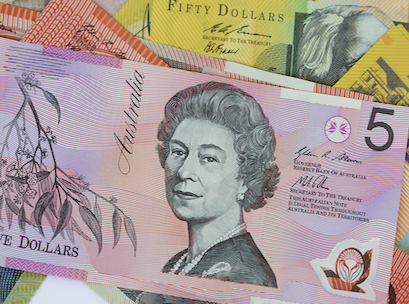 The Australian dollar has fallen against its US counterpart Wednesday, buying 71.52 US cents down from 71.65 US cents on Tuesday.
The Australian dollar has fallen against its US counterpart Wednesday, buying 71.52 US cents down from 71.65 US cents on Tuesday.
Yesterday, the local currency wobbled as a surprisingly weak reading of business activity stoked speculation interest rates might have to be cut this year to insulate the economy from threats at home and abroad.
The Aussie dipped 0.1 per cent to 71.56 US cents and away from Monday’s top at 72.04 US cents, a level that now marks stiff chart resistance.
A closely-watched index of Australian business conditions weakened sharply in December as sales, profits and employment all took a turn for the worse, a disappointing end to the year that will only add to concerns for 2019.
National Australia Bank’s index of business conditions slid nine points to plus-two in December, an unusually steep fall for a single month, while confidence held at plus-three.
The downturn will be unwelcome news for the Reserve Bank of Australia which had long cited the resilience of business conditions as a major reason for optimism on the economy.
The central bank holds its first policy meeting of the year on February 5 and markets had already wondered if it could stick to a long-standing call that the next move in rates would be up.
Instead, futures now imply around a 70 per cent chance of a cut in the 1.5 per cent cash rate by year end.
Government data due out on Wednesday are forecast to show inflation remained stubbornly stuck below the RBA’s target band last quarter, offering scope for an easing if necessary.
The swing in sentiment echoes that of the United States where markets have abandoned all thought of rate hikes this year, and there are major doubts the European Central Bank will proceed with a planned tightening.
Part of the cause has been a marked weakening in global economic data and China’s ongoing battle with the United States over trade.
Officials from Beijing are due to meet the US side in Washington this week and a lack of progress would likely weigh on the Aussie as a proxy for Chinese investment.
“Our view that the global economy will weaken this year has started to enter the mainstream but the recent economic data have deteriorated at a far sharper rate than even we had anticipated,” wrote Neil Shearing, group chief economist at Capital Economics in a note.
“This raises the prospect that we – and the markets – may be missing something that is altogether more serious.”
The air of unease has underpinned Australian government bonds in recent days with 10-year yields near their lowest since late 2016 at 2.23 per cent.
Three-year bond futures were up 1.5 ticks on Tuesday at 98.290, while the 10-year contract held steady at 97.7650.
Access exclusive analysis, locked news and reports with Inside Retail Weekly. Subscribe today and get our premium print publication delivered to your door every week.





